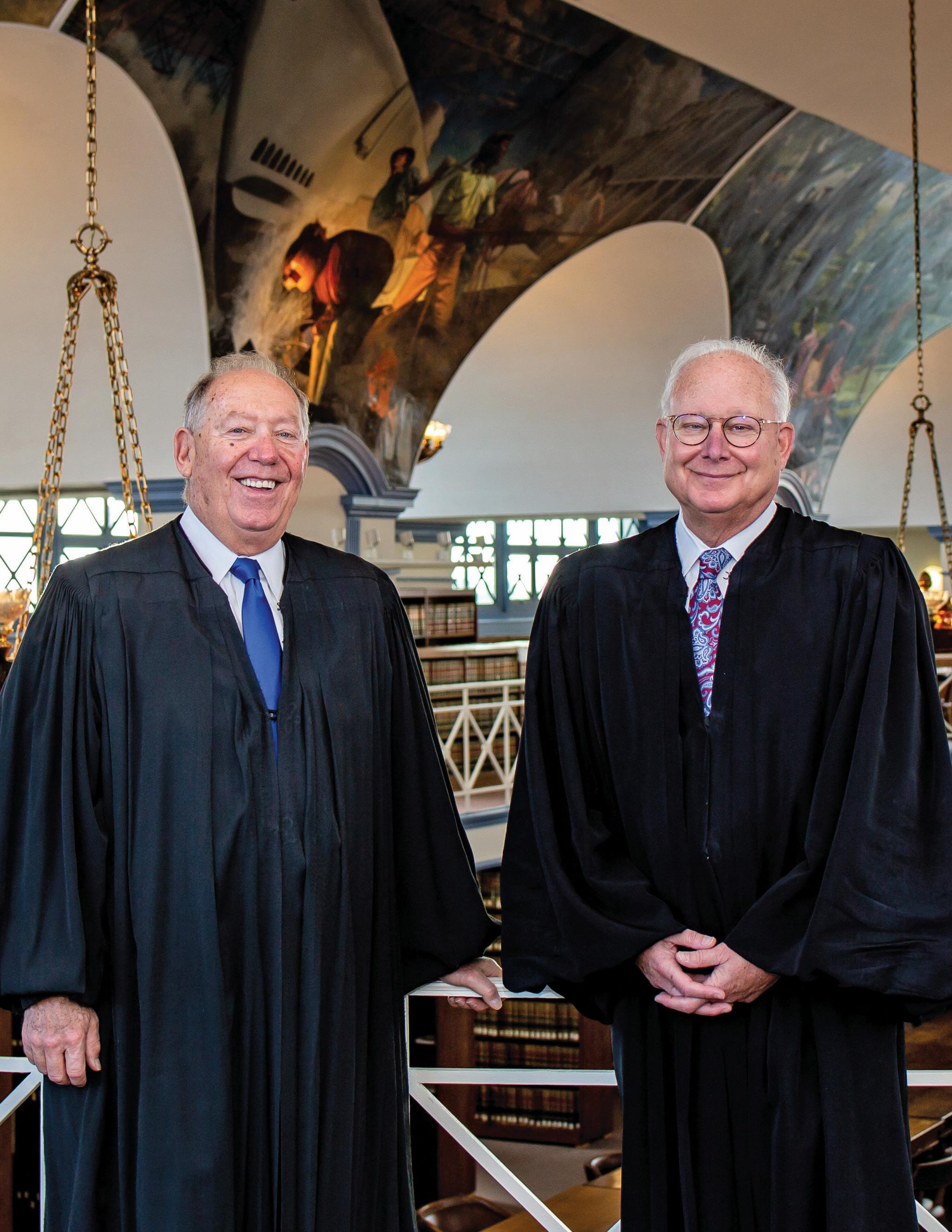
3 minute read
Hildacy Preserve: Marple’s Hidden Gem
Our Community feature by Holly Stupak
Nestled between Rte 252 and Palmers Mill Rd is Hildacy Preserve, a hidden treasure in Marple that offers visitors a variety of lush, seasonal vegetation and an abundance of wildlife. With two miles of unpaved hiking trails, it’s perfect for exploring. And if you happen to be an avid birdwatcher, you’re likely to spot some of the preserve’s bird species, which include Eastern Bluebirds, American Kestrels, Indigo Buntings and Red-shouldered Hawks.
The 55-acre preserve, now known as Hildacy Preserve, was originally the homeland of the Lenape peoples. In 1683 the land was part of a 300-acre land grant from William Penn to a local tanner and his family. Over time, the land was cleared, and by the late 1800s, only a small group of trees remained.

A bird’s eye view of Hildacy Preserve
Photo courtesy of Natural Lands
The name “Hildacy” came from Hilda and Cyril Fox, the couple who bought the property in 1936 and lived on it for almost 40 years. As land began being developed all around the region, they wanted to keep the land open for wildlife. So in 1981, Hilda donated the preserve to Natural Lands, a nonprofit organization that saves open space, cares for nature and connects people to the outdoors in Pennsylvania and southern New Jersey. “Hilda and Cyril Fox raised horses and German Shepherds there, and considered the property their country sanctuary,” explained Kirsten Werner, Natural Lands’ Senior Director of Communications. “They donated the farm to Natural Lands so we could continue their conservation work.”
Since 1981, Natural Lands has worked to restore Hildacy Preserve’s wetlands, woodlands and meadows (native grasses like big and little bluestem, Indian-grass, and switchgrass) to a natural state. They also planted hundreds of trees along the edge of Crum Creek, which runs through the preserve. The trees, which provide shade and food that help fish and other aquatic species, also improves water quality by filtering the nutrients and sediments transported by surface and groundwater flowing into the creek.

Winter at Hildacy Preserve
Photo courtesy of Jennifer Mathes
The stone farmhouse at Hildacy, which dates back to 1806 and was renovated in 2001, serves as Natural Lands’ regional headquarters. A smaller building on property that was once a domestic springhouse is now the Preserve Manager’s home.
Hildacy is one of 43 preserves and one public garden owned and managed by Natural Lands, which was founded in 1953 and originally called the Philadelphia Conservationists, led by an accountant and birdwatcher named Allston Jenkins. They worked together to preserve land up and down the east coast, and, in 1959, they created their first nature preserve. In 1961, they became Natural Lands Trust, Inc., eventually shortening the name to Natural Lands.

Bluebirds (male and female pair) perched on one of the many nest boxes installed on the preserve to encourage their breeding
Photo courtesy of Jennifer Mathes
For people who want to learn new skills, enjoy fresh air and meet others who share a love of nature, Natural Lands (www. NatLands.org) offers many opportunities to volunteer. There are many service projects to choose from as well as the Force of Nature® volunteer program, which teaches land stewardship techniques.

Aerial view of a portion of Hildacy Preserve, Marple's "Hidden Gem"
Photo courtesy of Natural Lands
Since March 2020, Hildacy Preserve as well as the other Natural Lands properties have seen a threefold increase in visitors. “The outdoors have been a huge source of comfort since the pandemic hit,” said Kirsten. “Hildacy and our other properties have provided enjoyment for people who want to escape the negative news of the day.” Hildacy is open to everyone, free of charge, dawn to dusk.






